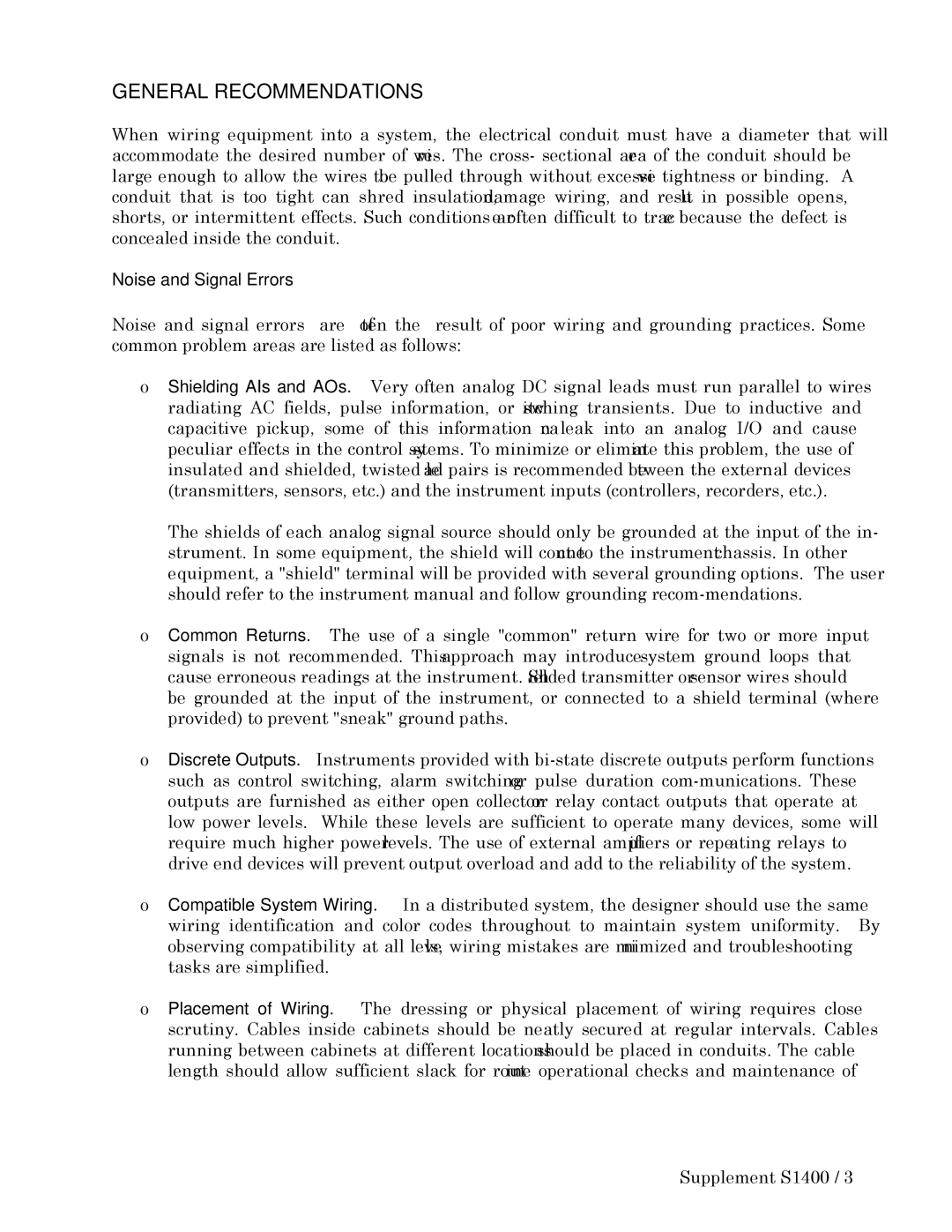GENERAL RECOMMENDATIONS
When wiring equipment into a system, the electrical conduit must have a diameter that will accommodate the desired number of wires. The cross- sectional area of the conduit should be large enough to allow the wires to be pulled through without excessive tightness or binding. A conduit that is too tight can shred insulation, damage wiring, and result in possible opens, shorts, or intermittent effects. Such conditions are often difficult to trace because the defect is concealed inside the conduit.
Noise and Signal Errors
Noise and signal errors are often the result of poor wiring and grounding practices. Some common problem areas are listed as follows:
oShielding AIs and AOs. Very often analog DC signal leads must run parallel to wires radiating AC fields, pulse information, or switching transients. Due to inductive and capacitive pickup, some of this information can leak into an analog I/O and cause peculiar effects in the control systems. To minimize or eliminate this problem, the use of insulated and shielded, twisted lead pairs is recommended between the external devices (transmitters, sensors, etc.) and the instrument inputs (controllers, recorders, etc.).
The shields of each analog signal source should only be grounded at the input of the in- strument. In some equipment, the shield will connect to the instrument chassis. In other equipment, a "shield" terminal will be provided with several grounding options. The user should refer to the instrument manual and follow grounding
oCommon Returns. The use of a single "common" return wire for two or more input signals is not recommended. This approach may introduce system ground loops that cause erroneous readings at the instrument. Shielded transmitter or sensor wires should be grounded at the input of the instrument, or connected to a shield terminal (where provided) to prevent "sneak" ground paths.
oDiscrete Outputs. Instruments provided with
oCompatible System Wiring. In a distributed system, the designer should use the same wiring identification and color codes throughout to maintain system uniformity. By observing compatibility at all levels, wiring mistakes are minimized and troubleshooting tasks are simplified.
oPlacement of Wiring. The dressing or physical placement of wiring requires close scrutiny. Cables inside cabinets should be neatly secured at regular intervals. Cables running between cabinets at different locations should be placed in conduits. The cable length should allow sufficient slack for routine operational checks and maintenance of
Supplement S1400 / 3
